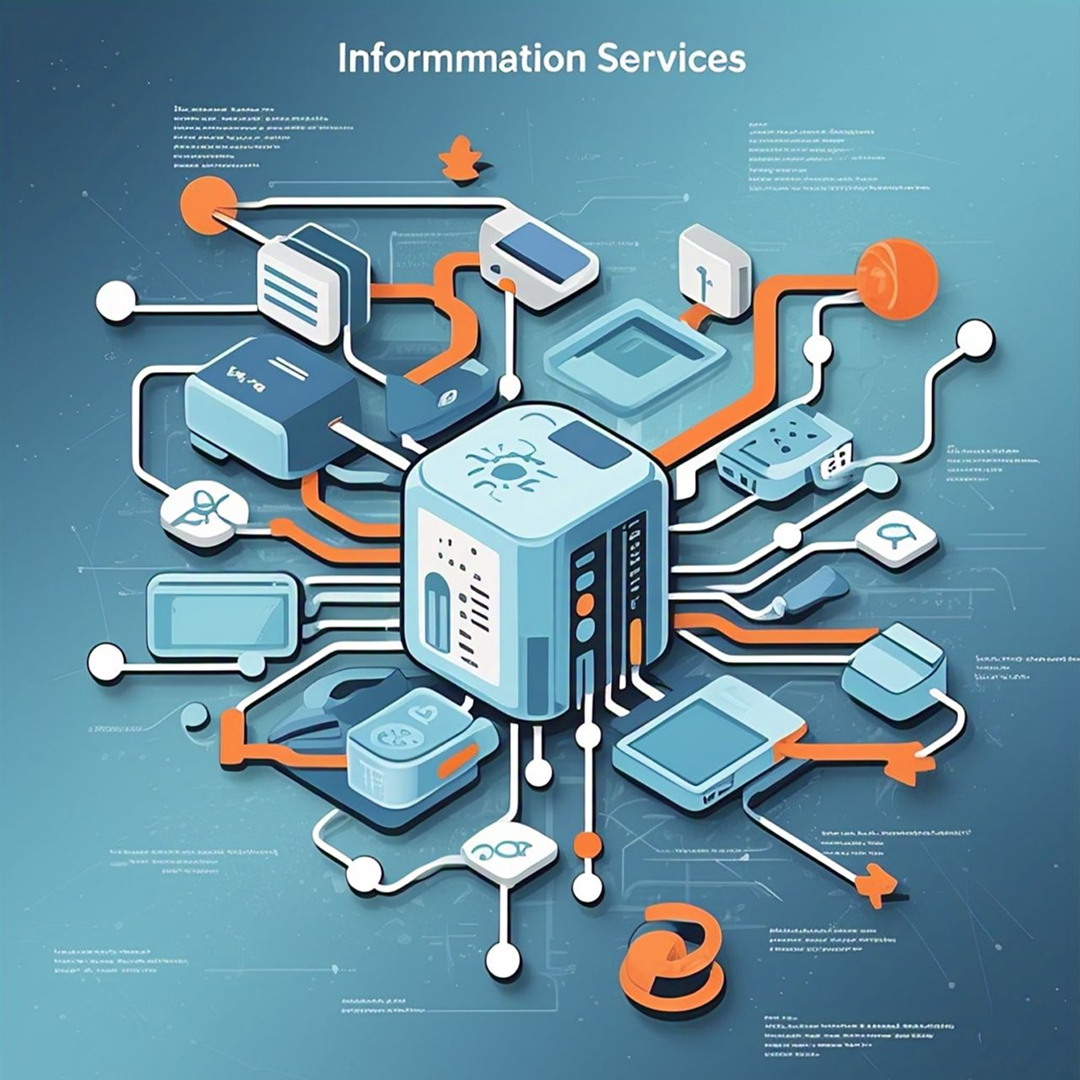Introduction to Data Management in Computer Networks
Data management plays a crucial role in computer networks by ensuring efficient storage, retrieval, security, and integration of information. Organizations rely on well-structured data management strategies to handle large-scale information processing, data security, and compliance. The evolution of data management has been fueled by cloud computing, IoT, and smart manufacturing, making it essential for business operations.
1. Overview of Information Services
Information services can be broadly categorized into several types. Each serves distinct purposes within a networked environment.
-Data Storage Services
These services provide mechanisms for storing data in structured or unstructured formats. They allow efficient retrieval and management. Examples include databases, data lakes, and cloud storage solutions.
Data Retrieval Services
These services enable users and applications to access stored data. They often include query languages like SQL and APIs that facilitate data access.
-Data Processing Services
Information services include functionalities for processing data. This can involve data transformation, analysis, and reporting. It may include batch processing, real-time processing, or analytics services.
-Security Services
Ensuring confidentiality, integrity, and availability of information is paramount. Security services include encryption, access control, and authentication mechanisms.
-Communication Services
These services facilitate the exchange of information between users and systems. This includes email services, messaging platforms, and collaboration tools.
2. The Role of Information Services in Computer Networks
Information services play a pivotal role in the functionality of computer networks. They enable various applications and systems to interact seamlessly. They provide the backbone for data-driven decision-making processes.
2.1 Efficient Data Governance
Proper data management ensures:
Compliance – Adherence to regulatory frameworks like GDPR and HIPAA.
Data Quality Control – Maintaining data consistency and accuracy.
2.2 Enhanced Collaboration Through Centralized Data Access
Modern businesses rely on data management for:
Secure File Sharing – Enabling data access while maintaining security.
Automated Backups – Preventing data loss and ensuring continuity.
2.3 Better Decision-Making with Business Intelligence
Data-driven organizations utilize data management for:
Business Intelligence Tools – Providing insights through dashboards and analytics.
Predictive Analytics – Using historical data to forecast future trends.
3. Technologies Supporting Information Services
Several technologies underpin information services in computer networks. Each contributes to the overall functionality and efficiency of these services.
3.1 Cloud Computing and Scalable Data Storage
Cloud-based data management offers:
Scalability – Adjusting storage capacity based on demand.
Cost-Efficiency – Reducing capital investment in physical infrastructure.
3.2 The Internet of Things (IoT) and Real-Time Data
IoT devices generate vast amounts of data that require effective data management, including:
Real-Time Monitoring – Tracking sensor data in industrial settings.
Automated Responses – Triggering actions based on data analysis.
3.3 Artificial Intelligence and Machine Learning
AI-driven data management enhances efficiency through:
Predictive Maintenance – Reducing equipment failures with early warning signals.
Data Personalization – Enhancing user experiences based on behavioral data.
4. Challenges in Information Services
While information services provide numerous benefits, they face several challenges. Organizations must address these challenges to ensure effective operations.
4.1 Data Security and Privacy Risks
As reliance on data management grows, challenges include:
Regulatory Compliance – Ensuring adherence to evolving data protection laws.
Cyber Threats – Protecting against security breaches and data theft.
4.2 Data Quality
Ensuring high data integrity within data management requires:
Data Silos – Eliminating isolated data storage to improve consistency.
Standardization – Applying uniform formats for efficient data integration.
4.3 Integration of Diverse Systems
Modern businesses face data management issues due to:
Legacy System Compatibility – Integrating outdated infrastructure with new technologies.
Multi-Cloud Strategies – Managing data across diverse cloud environments.
5. Future Trends in Information Services
The landscape of information services is continuously evolving. This is driven by advancements in technology and changing organizational needs.
5.1 Automation and AI-Driven Data Processing
Advancements in data management will drive:
Automated Data Cleansing – Removing duplicate and inaccurate records.
AI-Powered Analytics – Enabling intelligent insights with minimal manual effort.
5.2 Enhanced Data Privacy Measures
With growing concerns about security, future data management trends will focus on:
Zero Trust Security – Verifying every access request before granting permissions.
Blockchain Integration – Providing decentralized authentication for sensitive data.
6. Conclusion
The evolution of data management in computer networks has transformed how organizations store, secure, and utilize information. As businesses generate more data, implementing robust data management strategies becomes essential to optimize efficiency, ensure compliance, and drive data-driven decision-making.
Looking ahead, Integrated Intelligence in Smart Manufacturing will further enhance data management by enabling real-time analytics, automated workflows, and predictive intelligence. Organizations that invest in secure and scalable data management systems will gain a competitive advantage in the era of digital transformation.
By leveraging emerging technologies like AI, cloud computing, and blockchain, businesses can streamline data management and create smarter, more efficient networked environments. The future of data management is driven by automation, intelligence, and security—ensuring that businesses stay agile and data-driven.
Do you like to read more educational content? Read our blogs at Cloudastra Technologies or contact us for business enquiry at Cloudastra Contact Us.
